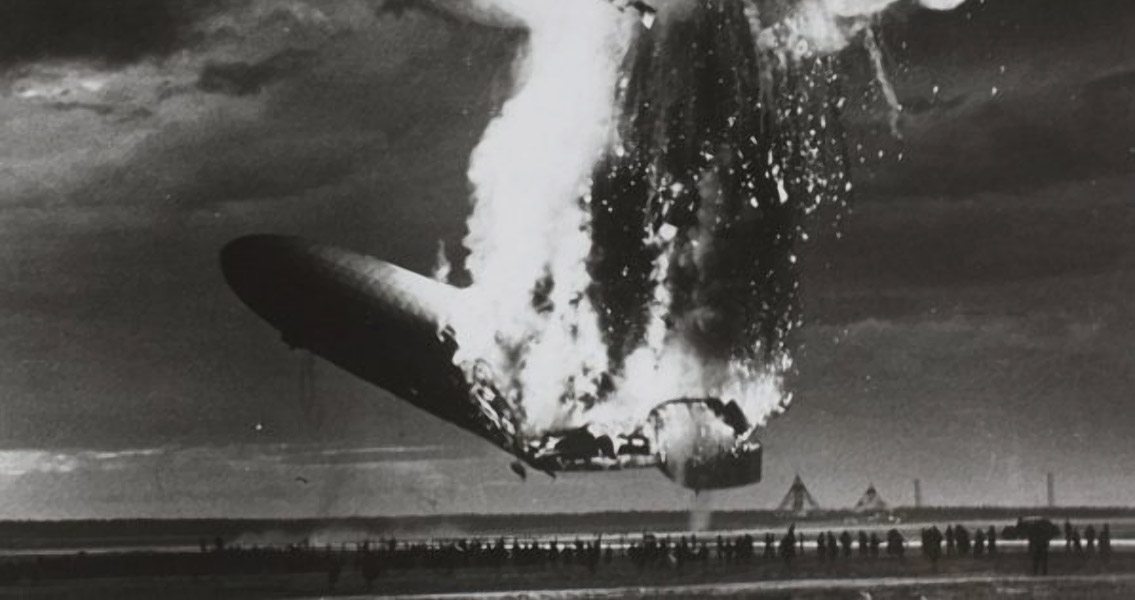<![CDATA[Shortly after 7:00 pm on 6th May 1937, the massive airship the Hindenburg prepared to land at Lakehurst, New Jersey. The spectacular dirigible, the biggest ever created, had arrived at New Jersey several hours before but had its mooring postponed due to poor weather over the landing site. Finally, at 7:21pm, the airship dropped its forward landing ropes and commenced its approach to the mooring mast. Until then, everything apart from the weather delay had been routine, familiar practice for an airship and its crew which had already made over 50 successful flights, including several Atlantic crossings. At 7:25pm, the first signs of the impending disaster appeared. Both staff on the ground at Lakehurst, and crew and passengers on board the Hindenburg itself, reported seeing flames licking out from the hull of the ship. Rapidly the fire spread across the ship's hull and engulfed the entire tail section. For a few seconds the massive dirigible managed to stay level, but it quickly started to plummet tail first to the ground, its nose thrust up to the sky. The ship's passengers were hurled around the cabin as a result of the vessel's sudden change of direction and loss of height. One passenger, Margaret Mather, claimed to have been flung some fifteen to twenty feet across the airship's dining room. Filled with intensely flammable hydrogen, the entire airship was covered in flames within a minute. Of the Hindenburg's 97 passengers and crew, 35 were killed - thirteen passengers and 22 crew members, as well as one member of ground staff. Those who survived did so by jumping out of the airship's windows as it fell to the ground, and running as far and fast as they could from its burning carcass. The 804 feet long Hindenburg was the largest airship ever built, and its tragic demise triggered the decline of dirigibles as the preferred mode of air travel. Adorned with swastikas, the ship had been appropriated by the Nazis to be used as a symbol of the might of the Third Reich. Its first public flight in 1936 was part of a 4,100 mile long propaganda tour of Germany, patriotic music and pro-Hitler messages being blasted out from speakers attached to the ship. Its trans-Atlantic journeys, ferrying people and post between Europe and North America, allowed the symbol of the Third Reich to be seen around the world. So connected was it to the Nazi regime that bomb threats had been leveled against it before its final, fateful flight; a fact which sparked accusations of sabotage after the disaster. Most explanations for the Hindenburg tragedy claim it was the result of an electro-static discharge igniting leaking hydrogen. Although causes of both the static spark and the hydrogen leak are unclear, no convincing evidence has ever been found that the ship was sabotaged. A long way from being history's worst airship disaster in terms of fatalities, the Hindenburg is remembered for the extensive media coverage it received, including radio announcer Herb Morrison's emotional exclamation, “Oh, the humanity!”, and the enormous symbolism the ship carried, as a symbol of the Third Reich, and the era of lighter than air travel.]]>
The Anniversary of the Hindenburg Disaster
